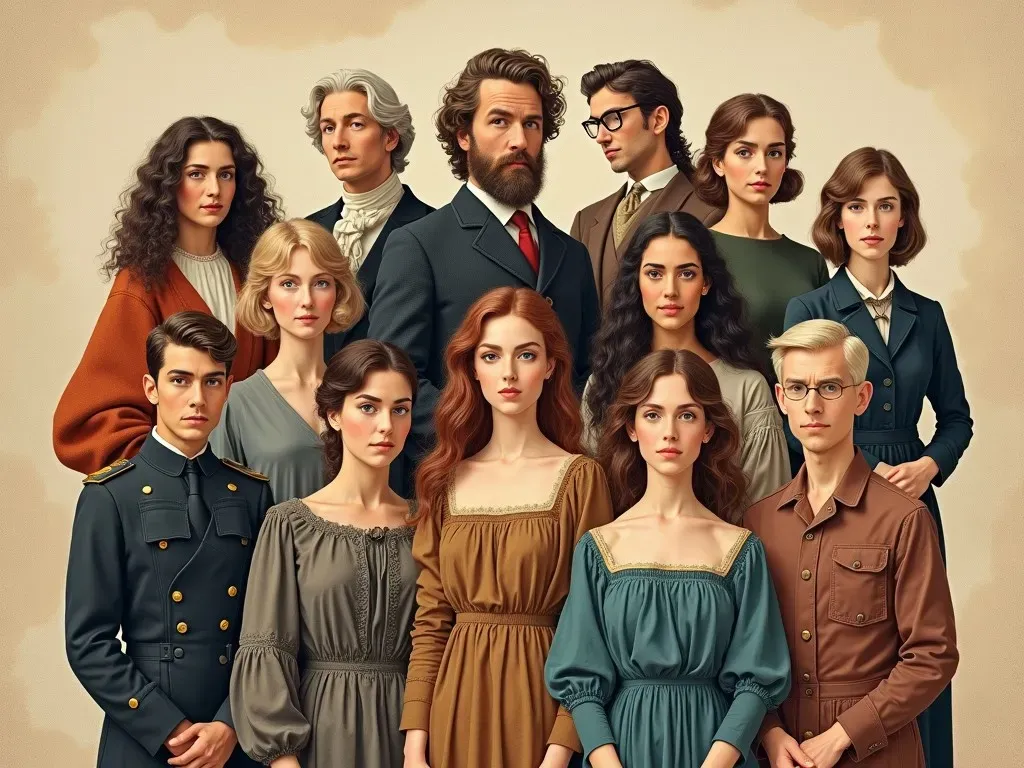"Paintings of people" are a captivating segment of the art world that highlights the deep connection between artists and their subjects. Throughout history, the portrayal of individuals has served to document human existence, express emotions, and convey cultural significance. The exploration of such artworks unveils intricate stories, underlying Techniques, and remarkable styles that transcend mere representation.
The Significance of Portraits in Art
Portrait painting has been a vital component of artistic expression for centuries, reflecting societal norms, historical milestones, and the evolution of artistic techniques. These paintings represent more than just visual likenesses; they encapsulate character, emotion, and even the zeitgeist of their time.
| Art Movement | Key Characteristics | Notable Artists |
|---|---|---|
| Renaissance | Realism, depth, and perspective | Leonardo da Vinci, Raphael |
| Baroque | Dramatic use of light, detail | Rembrandt, Caravaggio |
| Romanticism | Emotion, nature, and individualism | Eugène Delacroix, John Constable |
| Impressionism | Movement, light, and everyday scenes | claude monet, Pierre-Auguste Renoir |
Famous portrait paintings and Their Stories
Exploring the realm of famous paintings of people unveils masterpieces that resonate with viewers across generations. Below are some iconic examples that exemplify the artistry of portrait painting:
1. The Mona Lisa by Leonardo da Vinci
Arguably the most famous painting in the world, the Mona Lisa (c. 1503-1506) is renowned for its enigmatic expression and masterful use of sfumato. Leonardo da Vinci’s technique creates a lifelike quality that captivates audiences.
2. Girl with a Pearl Earring by Johannes Vermeer
This iconic painting, often dubbed as the "Mona Lisa of the North," showcases Vermeer’s exceptional use of color and light. The direct engagement of the girl’s gaze creates a sense of intimacy, inviting viewers into her world.
3. American Gothic by Grant Wood
American Gothic (1930) depicts a stern-looking farmer and his daughter, embodying the spirit of rural America during the Great Depression. The painting has become a symbol of Americana, reflecting the values and hardships of that era.
4. Napoleon Crossing the Alps by Jacques-Louis David
The dramatic portrayal of Napoleon on horseback, exuding power and determination, is a classic example of neoclassical art. Painted in 1801, the artwork served to enhance Napoleon’s image as a heroic leader.
Noteworthy Techniques in Portrait Painting
1. Use of Color
Color theory plays an essential role in portrait painting. Artists often choose color palettes that evoke specific emotions or convey the personality of the subject. For example, vibrant colors may suggest vitality and youthfulness, while muted tones can indicate introspection or sadness.
2. Lighting
Chiaroscuro, the technique of using strong contrasts between light and dark, is prevalent in many portrait paintings. This technique creates a three-dimensional effect, adding depth and drama to the subject.
3. Composition
The arrangement of elements within a portrait can influence the viewer’s response. Focal points created by strategic positioning draw attention to specific features or emotions, allowing for a deeper connection with the subject.
4. Cultural Context
The cultural background of both the artist and the subject significantly impacts the portrayal in the painting. Factors such as social status, gender roles, and fashion of the time inform the way people are depicted, providing insight into historical contexts.
Infamous Portraits in Art History
Here is a list of some other notorious portrait paintings, their creators, and the historical significance they possess:
| Painting Title | Artist | Year | Cultural Significance |
|---|---|---|---|
| The Kiss | Gustav Klimt | 1907-1908 | Symbol of love and intimacy in art history. |
| Whistler’s Mother | James McNeill Whistler | 1871 | Represents the Victorian ideals of motherhood and affection. |
| Self-Portrait with a Straw Hat | Édouard Manet | 1893 | A self-referential commentary on the artist’s role and identity. |
| The Arnolfini Portrait | Jan van Eyck | 1434 | One of the earliest examples of oil painting, rich in symbolism. |
The Evolution of Portraiture Over Time
The art of portraiture has evolved dramatically, riding the waves of artistic movements and societal changes.
- Middle Ages: Portraits were often religious, focused on spiritual representation rather than individualism.
- Renaissance: This era marked a shift towards realism, the use of perspective, and an emphasis on the individual.
- Baroque Era: Artists emphasized drama and emotion, often employing chiaroscuro and intense detail.
- Modern Times: The 20th century saw abstraction and experimental approaches to portraiture, reflecting contemporary issues such as identity and cultural diversity.
Frequently Asked Questions (FAQs)
Q: What makes portrait paintings valuable?
A: Portrait paintings hold value due to their historical significance, artistic merit, and the reputation of the artist. They often capture significant cultural narratives that resonate across time.
Q: Are there different types of portraits?
A: Yes, portraits can vary widely, including formal portraits, candid portraits, and conceptual portraits. Each type serves different artistic and societal purposes.
Q: How can one appreciate portrait paintings?
A: To appreciate portrait paintings, consider the context in which they were created, the techniques used, and the emotions conveyed. Understanding the artist’s intentions can also enhance one’s appreciation.
Q: What role do portraits play in modern art?
A: In modern art, portraits often explore themes related to identity, race, and gender, challenging traditional notions of representation and encouraging dialogue around societal issues.
For a deeper exploration of notable portraits through history, please visit My Modern Met.
In painting the human condition, artists capture not just appearances, but the very essence of humanity, making the art of portraiture a timeless and invaluable practice. From the grandeur of historical figures to the subtleties of everyday life, paintings of people continue to enchant and provoke thought, reminding us of the shared experiences that connect us all.
